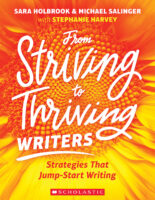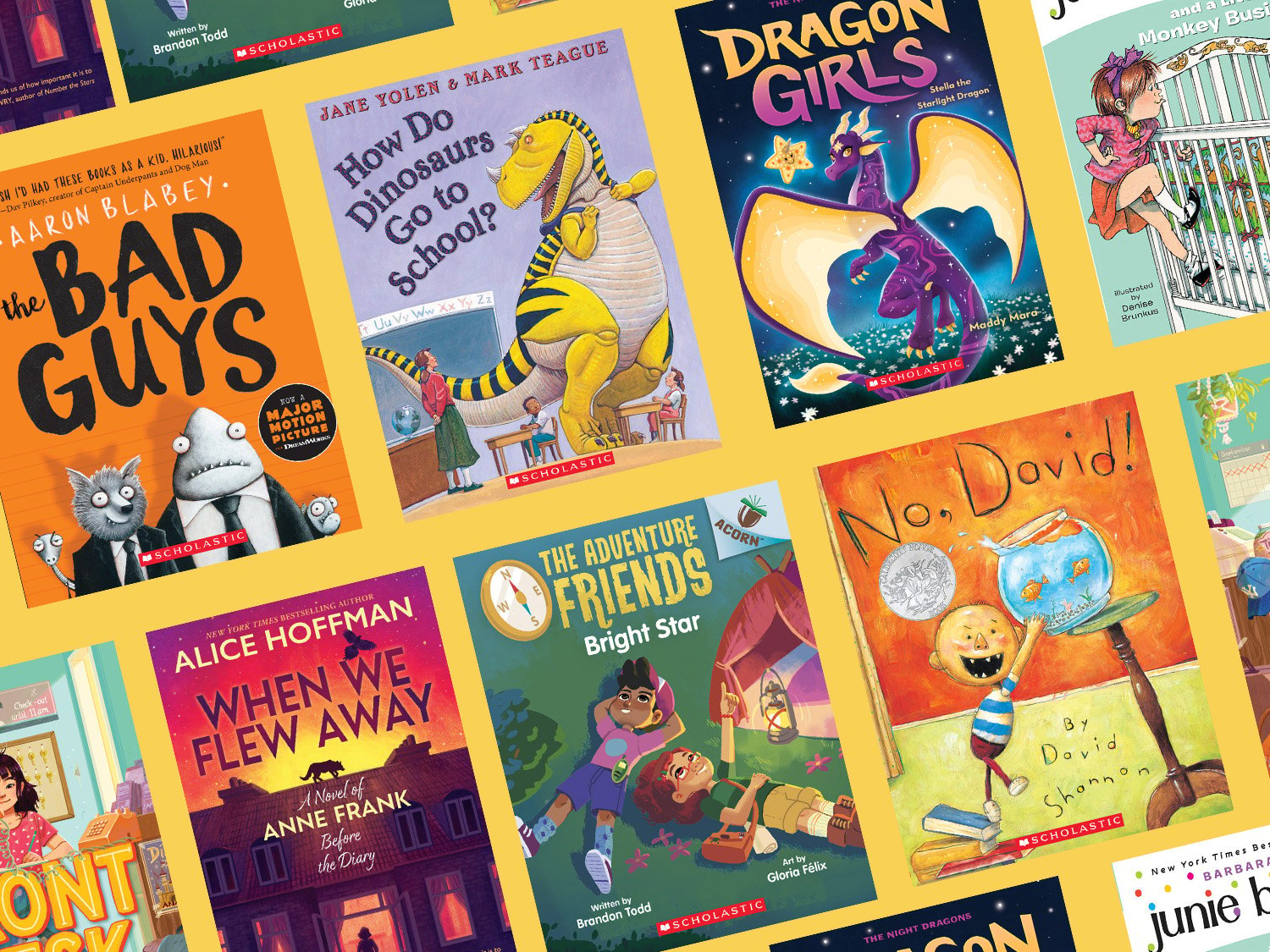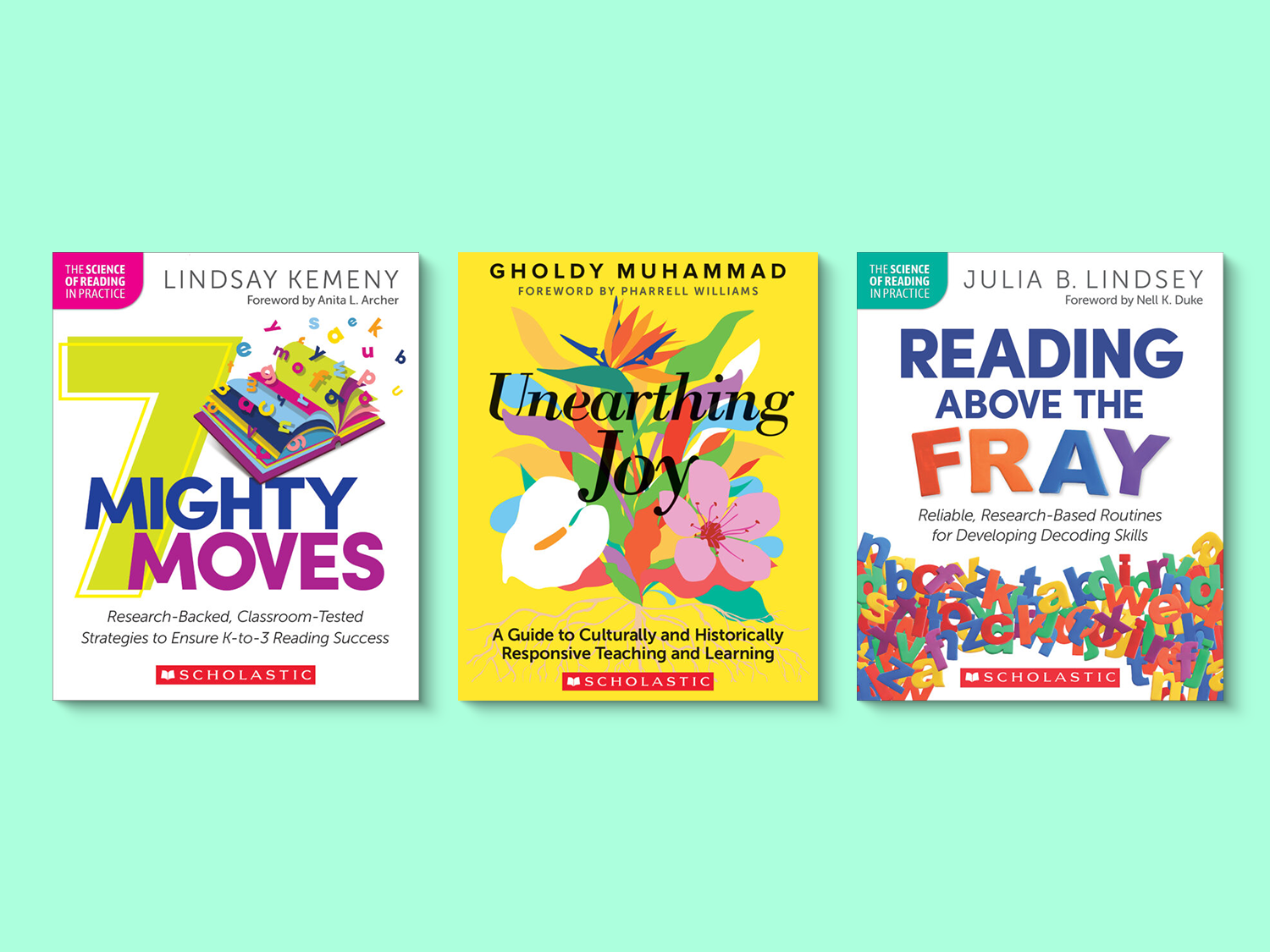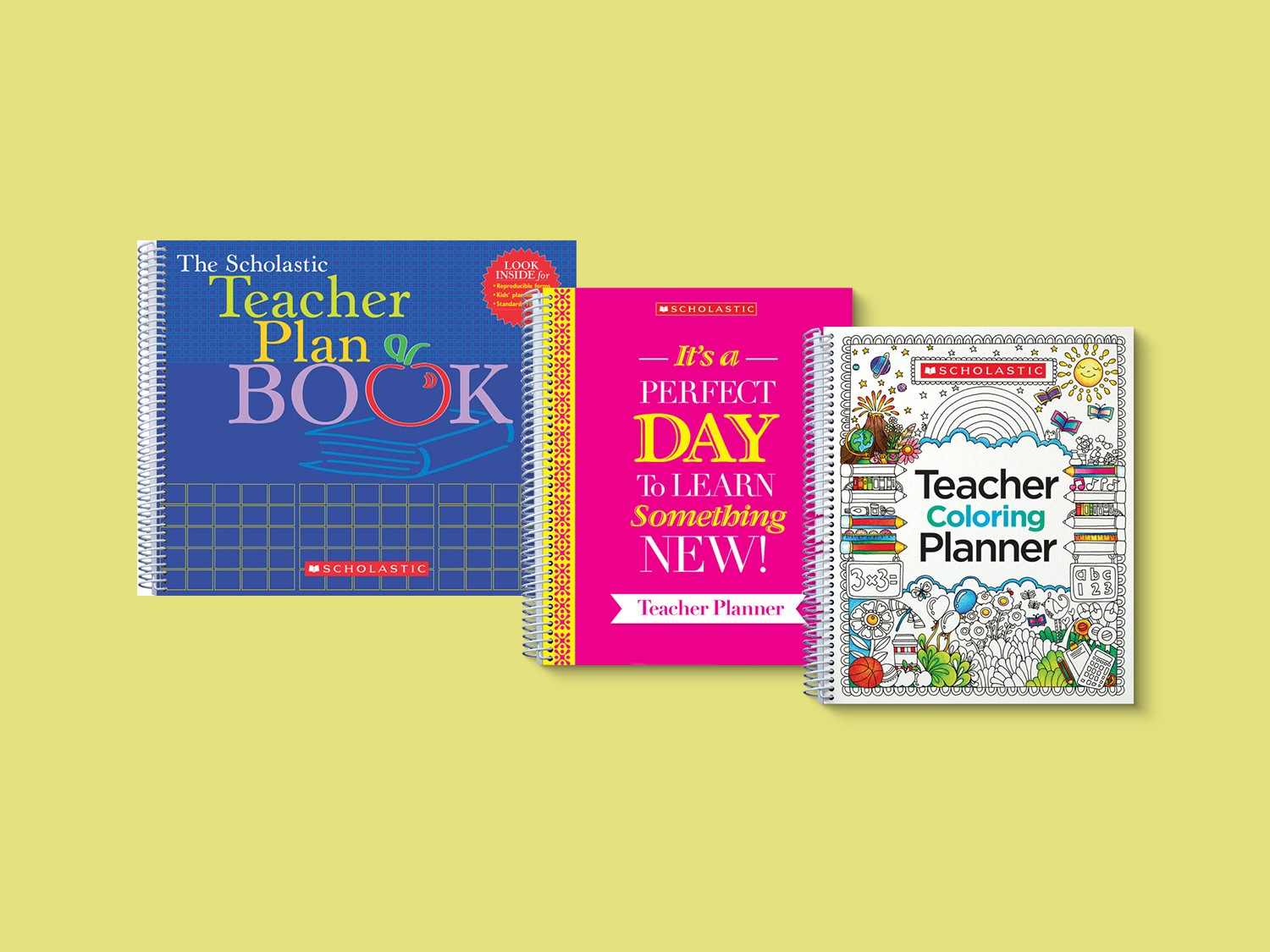How to Help Your Students Harness Rhyme to Convey Meaning in Their Writing
Stimulate your students’ thinking and help them become stronger writers with writing frameworks by Sara Holbrook, Michael Salinger, and Stephanie Harvey.
Children learn to write by writing—a lot—for a real purpose about things that matter to them. We know that striving readers thrive when they find books that engage and delight them and begin to read voluminously. In a similar way, we want our students to practice voluminous writing!
In our book, Striving to Thriving Writers: Strategies that Jump-Start Writing, we use 27 writing frameworks to stimulate thinking and offer students multiple ways to organize their thoughts. They help students expand, synthesize, articulate, and share their literacy and content area knowledge. More importantly, our framework process emphasizes reading, discussion, partner research, composition, rereading, revision, and sharing, building both content knowledge and communication skills.
Writing frameworks also generate student work that can grow into essays, fiction and non-fiction pieces, speeches, and poems—and provide you with material for formative assessments. Our frameworks can help scaffold learning in any genre of any text type. They zero in on practical writing strategies and creative elements and can “plug into” any existing writing resource or program. The book includes access to digital resources including videos, slides for each framework, and GO sheets, making it readily adaptable to virtual learning.
Here’s one fun writing framework to help your students harness rhyme to convey meaning and make words memorable:
Harnessing Rhyme: Making Words Memorable
For grades 2 and up
In this writing framework, our goal is to harness rhyme to convey meaning, which means our details are of utmost importance and the rhyme supports them in fun and engaging ways. Rhymes at their best are not predictable, but rather a little surprising. Because of this, the very act of rhyming can stretch vocabularies as we use tools such as rhyming dictionaries and thesauruses to find just the right word to suit our dual purpose of rhyme and meaning.
1. Introduce the Framework
Ask your students if they like to rhyme. Some may express trepidation, having attempted it and gotten stuck. Others may embrace it happily, rhyming anything, even making up words that don’t exist.
2. Discuss Mentor Text
- Share the slide below and read the poem aloud. Then invite your students to read it with you.
- Ask: How many rhymes are in this piece of text? (only two) When beginning writers attempt rhyme, they often try to rhyme too many words. Students will be familiar with this simple rhyme pattern (a quatrain, ABCB pattern) as it sounds like a nursery rhyme or song lyrics. What they may never have realized is that there is only one rhyme per stanza.
- Share this slide for a breakdown of how the rhyming pattern works:
3. Co-construct Version 1
- Choose a writing topic that is familiar to your students. We’ve had success with topics such as a bathtub, the playground, the view from the window, and the library.
- Divide your writing space into two columns.
- Think about your topic and take no more than a couple of minutes to list in the left column factual details about it.
- Choose a few of the details and list rhyming words alongside them. This step has a dual purpose: It can expand vocabulary as students reach for just the right words, and it can stimulate ideas for where to go next with the text.
- Begin by putting one of the details into a simple sentence and writing it in the right column. No rhymes allowed.
- Continue by adding two more sentences to create a stack of three sentences with NO RHYMES!
- Add a fourth sentence that does rhyme—specifically with the last word in sentence.
- Add another four lines, following the same steps.
- When you’re finished, read aloud your Version 1 with students and celebrate. You have written two quatrains!
4. Have Students Write Their Version 1
- Have students pair up with a writing partner and lead them to choose a topic related to a subject you are studying. Sometimes we write topics on slips of paper and have students draw them from a basket.
- Instruct them to begin by listing factual details about their topic, not opinions, in the left column of their writing space. Have research materials handy.
- Ask students to read items off of their lists occasionally, checking to make sure they are including facts only. There should be no words such as cute, wonderful, terrible, or ugly.
- Ask them to choose a detail and create a cluster of words that rhyme with it, using a rhyming dictionary if necessary. Then have them do it for a couple more details.
- Ask students to begin writing in the right column. Ask them to write down a first line (no rhymes). Then ask for a second line (no rhymes), and finally a third (no rhymes). Stick to the facts. Excitement builds as writers hold back the urge to rhyme. As they write, periodically ask students to read a line or two aloud.
- Ask students to add a fourth and final line that rhymes with the last word of line 2, encouraging them to rearrange lines and/or words if necessary. If your students get stuck, urge them to confer with each other for ideas and to consult a rhyming dictionary to stretch vocabulary.
- Encourage your students to experiment. Be sure they understand that the rhyme should somehow support the text’s meaning, therefore no nonsense rhymes are allowed.
5. Co-construct Version 2
- Project your co-constructed Version 1 and review it to see if you can work in more details—colors, similes, sensory details, and such. Add at least two details, and if necessary, revise lines for rhythm and flow.
- Strengthen verbs. Try to make one change that makes your text jump!
6. Have Students Write Their Version 2
- Challenge your students to clarify their message by adding at least two details and revising the text as necessary.
- Challenge them to strengthen their verbs.
- Encourage repeated read-alouds to determine if the piece is working for them.
7. Share!
- Ask your students to share their work with a classmate other than their writing partner.
- Ask volunteers to share with the whole class.
- Encourage your students to speak for word meaning rather than emphasizing the rhyme. There is an unfortunate tendency when reading rhyming text to heavily accent the rhyming words. Resist! Remind students they are trying to convey an idea. The rhyme may support that idea, but it is not the most important part.
To learn more about how to use writing frameworks in your classroom, you can purchase our book here.
About the authors:
Sara Holbrook is a novelist, poet, and educator with a multitude of books for both teachers and students under her belt, including The Enemy: Detroit, 1954, which won the 2018 Jane Addams Children’s Book Award. She works with Michael Salinger to help K–12 students across the states and around the world develop writing, public speaking, and comprehension strategies.
Michael Salinger is a poet, performer, and advocate of poetry and performance in education. With Sara Holbrook, he co-founded and directs Outspoken Literacy Consulting, an organization that runs programs to help K–12 students develop writing, public speaking, and comprehension strategies.
Stephanie Harvey, president of Stephanie Harvey Consulting, has spent 45 years in education as an elementary and special education teacher and literacy staff developer. She works around the world with educators in schools and districts to implement progressive literacy practices.
Want more great content? Subscribe to our Teacher Newsletter below and get teaching ideas delivered right to your inbox.






